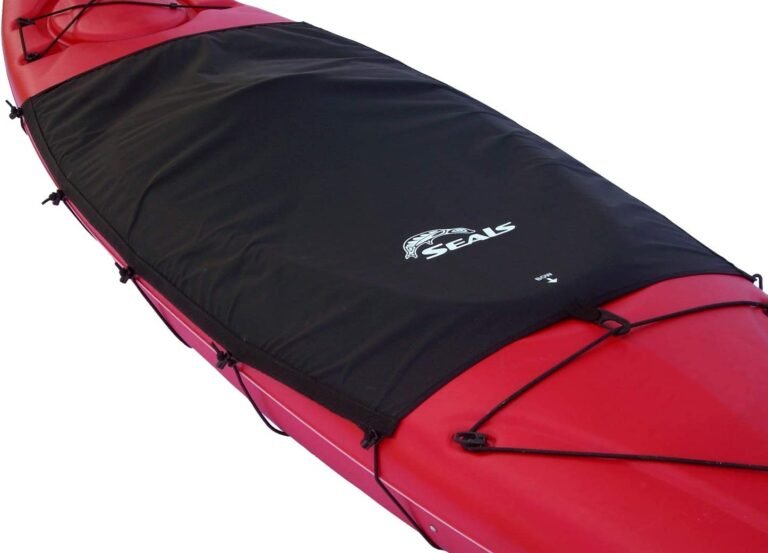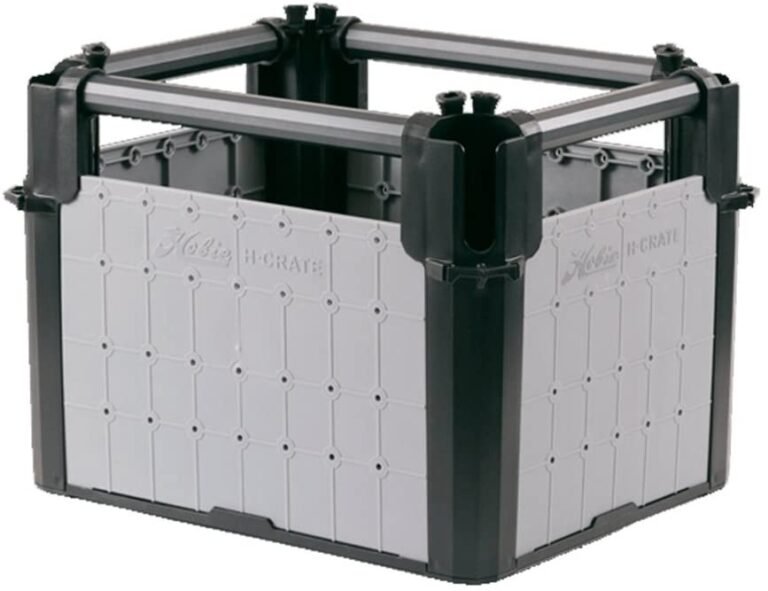How to Register a Kayak in Texas

In Texas, registering your kayak is not just a legal requirement, it’s a critical step to ensuring your safety and accountability on the water.
Understanding the kayak registration process is essential, regardless of whether you’re paddling for leisure, sport, or commercial purposes. By registering your kayak, you help authorities identify and recover it if lost or stolen, and you contribute to the overall safety of the waterways.
This guide will walk you through the step-by-step process of registering your kayak in Texas, ensuring that you stay compliant with state laws when out kayaking. It is also important to note that not all kayaks need to be registered.
For those new to kayaking, a kayak is a small, narrow watercraft typically propelled by a double-bladed paddle. Kayaks come in various forms, including sit-in, sit-on-top, and inflatable models, catering to diverse preferences among water enthusiasts.
Importance of Vessel Registration for Kayak Owners
Kayak registration may seem like an administrative chore, but it plays an important role in promoting safety and accountability for both kayakers and the general public. Here’s why registration is important:
- Safety on the Water: A registered kayak helps authorities identify and track vessels in case of emergencies. If you become stranded or your kayak is lost, having it registered can significantly speed up the recovery process.
- Accountability: Registration ties ownership to a specific individual, ensuring that kayakers are held responsible for their actions on the water. This is crucial for enforcing boating laws and regulations, such as speed limits and alcohol consumption rules.
- Better Theft Protection: In the unfortunate event that your kayak is stolen, registration provides an official record that can help law enforcement in its recovery.
- Environmental Impact: Texas requires kayak registration as part of broader efforts to manage and protect its natural resources. Registration fees often contribute to conservation efforts, ensuring that public waterways remain safe and accessible.
Do I Need to Register My Kayak in Texas?
Texas law differentiates between motorized and non-motorized kayaks, and there are specific rules based on the type of vessel you own. Let’s break it down:
Non-Motorized Kayaks:
Non-motorized kayaks that are under 14 feet in length are generally exempt from registration. This includes kayaks, canoes, rowboats, rubber rafts, and similar non-motorized vessels.
If your kayak doesn’t have a motor, and it’s shorter than 14 feet, you are not required to register it. However, it’s always a good idea to check the latest regulations to ensure no changes have occurred.
Motorized Kayaks:
Any kayak that has a motor, whether it’s electric or gasoline-powered, must be registered, regardless of the size. This applies to kayaks with any form of motorized propulsion.
The requirement for motorized kayaks is to ensure that vessels with motors are properly accounted for in the event of an accident or emergency and to help authorities track these vessels for safety reasons.
Commercial Use:
Kayaks used for commercial purposes, such as guided tours or rentals, may have additional registration and insurance requirements. Commercial kayaks must comply with stricter regulations to ensure public safety.
If you plan to use your kayak for commercial purposes, it’s essential to contact the Texas Parks and Wildlife Department (TPWD) for specific guidelines and any additional requirements.
Consequences of Non-Compliance
Failing to register your kayak in Texas can result in serious consequences. Here’s what you need to know:
- Fines and Penalties: If you operate an unregistered kayak, you could face fines. These fines vary depending on the circumstances, but they can add up quickly. In some cases, failing to register your kayak can result in a citation or even the impoundment of your vessel.
- Insurance Issues: Many insurance policies require that the vessel be properly registered to be covered. If your kayak is unregistered, your insurance provider may refuse to cover you in the event of an accident or theft. This could leave you financially responsible for damages or losses.
- Liability: If you’re involved in an accident or a legal dispute, the lack of registration could complicate matters. Without proper documentation, it may be harder to prove ownership, and you could face liability issues.
- Impact on Conservation Efforts: Non-compliance hinders contributions to conservation efforts. Registration fees support initiatives aimed at preserving Texas’ natural resources, and failure to comply affects these crucial conservation endeavors.
By registering your kayak, you avoid these potential complications and ensure that you are legally compliant with state laws.
Registration Process
Registering your kayak in Texas is a straightforward process. Below are the steps to follow:
Step 1: Determine if Your Kayak Needs Registration
Most kayaks under 14 feet in length, non-motorized canoes, and paddleboards do not require registration. However, exceptions exist for certain scenarios, such as using an outboard motor. Begin this process by visiting the official TPWD website to access the most up-to-date information regarding kayak registration. The website serves as a comprehensive resource, providing guidelines, forms, and any recent regulatory updates.
Step 2: Gather All Necessary Documents
Before you begin the registration process, ensure you have all the required documents. If your kayak requires registration, collect necessary information such as the vessel’s make, model, length, and serial/HIN (Hull Identification Number). Others include:
- Proof of Ownership: You’ll need documents that prove you own the kayak, such as the Manufacturer’s Certificate of Origin, bill of sale, or title.
- Completed Application Forms: You must fill out the Vessel/Boat Application (Form PWD 143). This form asks for basic details about your kayak, such as its size and type.
- Sales Tax Payment Proof: You may need to provide proof that sales tax has been paid on the kayak, or a tax affidavit if applicable.
Step 3: Choose a Registration Method
Once you have all the necessary documents, you can choose from several methods to submit your application:
- Online: The easiest and fastest option. Visit the TPWD website to complete your registration online.
- Mail: You can mail your completed forms and payment to the TPWD.
- In-Person: If you prefer, you can visit a TPWD office or a participating tax assessor-collector’s office to submit your registration.
Step 4: Submit Application and Payment
Pay the registration fee based on your kayak’s type and length. Payment methods vary depending on the registration method you choose.
Step 5: Receive Your Registration Certificate and Decals
After processing, TPWD will issue your registration certificate and decals. You’ll need to display these decals on your kayak as proof of registration.
Registration Fees
The registration fee in Texas depends on the type and length of your kayak. Here’s a breakdown of the fees:
| Length of Kayak | Registration Fee |
| Less than 16 ft | $32 |
| 16 ft, but less than 26 ft | $53 |
| 26 ft, but less than 40 ft | $110 |
| 40 ft or more | $150 |
Additional Costs:
- Late Fees: If you fail to renew your registration on time, you may incur late fees.
- Replacement Decals: If your decals are lost or damaged, there may be a fee for replacements.
For the most current fee schedule, always check the TPWD website.
Common Mistakes to Avoid
When registering your kayak, it’s important to avoid these common pitfalls:
- Underestimating Registration Requirements: Mistakenly assuming that all kayaks are exempt from registration can lead to non-compliance. Understand the criteria for registration, especially if your kayak falls under specific categories such as motorized vessels.
- Incomplete Documentation: Failing to gather all necessary documents before starting the registration process can delay your application. Double-check your paperwork before submission.
- Missing Deadlines: Forgetting to renew your registration on time can lead to fines and penalties. Keep track of your registration’s expiration date to avoid late fees.
- Incorrect Placement of Registration Numbers: The registration numbers and decals must be placed in the correct location on your kayak. Misplacing them could result in fines or complications.
Displaying Your Registration
Once your kayak is registered, it’s essential to display the registration numbers and decals properly. Here’s how:
- Placement: Place the registration numbers on both sides of the kayak’s bow. The numbers should be clearly visible and contrast with the color of the kayak.
- Size: The registration numbers should be at least 3 inches high, in block letters, and easy to read.
- Decals: The decals must be displayed on both sides of the kayak, near the registration number.
Proper placement ensures that your kayak is compliant with Texas laws and makes it easier for authorities to identify it.
Renewing Your Registration
Kayak registrations in Texas are valid for two years. To renew your registration, you can renew online, by mail, or in person. The process is similar to the initial registration process.
You’ll need proof of your previous registration and payment for renewal fees. Make sure to renew before your registration expires to avoid late fees or penalties. Registering your kayak in Texas is essential for compliance with state laws and for ensuring safety on the water.
Stay informed about any changes in regulations, renewal deadlines, and best practices. The Texas Parks and Wildlife Department (TPWD) serves as a valuable resource, providing up-to-date information, forms, and assistance for all your registration needs.
Frequently Asked Questions
Do I need to register my kayak in Texas?
Yes, in Texas, all motorized kayaks must be registered with the Texas Parks and Wildlife Department (TPWD). Additionally, non-motorized kayaks that are 14 feet or longer are also required to be registered. This registration ensures that your kayak is legally recognized and helps in maintaining safety standards on the water.
What is the registration fee for a kayak in Texas?
The registration fees for kayaks in Texas vary based on the length and type of the vessel. For example, kayaks shorter than 16 feet typically incur a fee of $32, while those between 16 and 26 feet cost $53. Fees increase for larger vessels, with those over 40 feet costing $150. It’s important to check the TPWD website for the most current fee schedule.
How long is a kayak registration valid in Texas?
A kayak registration in Texas is valid for two years from the date of issuance. After this period, you will need to renew your registration to continue operating your kayak legally on Texas waters.
What documents do I need to register my kayak?
To register your kayak, you will need several documents:
– Proof of ownership (such as a bill of sale or Manufacturer’s Certificate of Origin).
– A completed application form (specifically, the Vessel/Boat Application, Form PWD 143).
– Proof of sales tax payment or a tax affidavit indicating that sales tax has been paid on the kayak.
Can I register my kayak online?
Yes, you can register your kayak online through the Texas Parks and Wildlife Department’s website. This option is often the most convenient and fastest way to complete your registration. Make sure to have all necessary documents ready for upload during the process.
Where can I submit my kayak registration application?
You can submit your kayak registration application through several methods:
– Online via the TPWD website.
– By mail by sending your completed forms and payment to TPWD.
– In person at a TPWD office or at participating local tax assessor-collector offices across Texas.
What happens if I don’t register my kayak?
If you fail to register your kayak when required, you may face legal consequences such as fines and penalties if stopped by law enforcement while on the water. Additionally, operating an unregistered vessel can complicate matters if you need assistance or if your kayak is lost or stolen.
Are there any exemptions from registering a kayak?
Yes, there are exemptions in Texas law. Non-motorized kayaks that are less than 14 feet in length do not require registration. This exemption applies to small vessels like canoes, rowboats, and inflatable rafts.
What is the process for registering an out-of-state kayak in Texas?
If you have an out-of-state kayak that you plan to use in Texas for more than 90 consecutive days, you must register it with TPWD. You will need to provide proof of ownership and any existing registrations from other states during this process.
Do I need a title to register my kayak?
If your kayak was previously titled (for example, if it was registered in another state), you will need to provide that title during registration. If you do not have a title because it was never issued or has been lost, you may need to fill out additional forms or provide alternative proof of ownership.
What identification do I need to bring when registering my kayak?
When registering your kayak, it’s essential to bring a current photo ID (such as a driver’s license) to verify your identity as part of the application process.
Can I register my kayak at any local tax office?
Yes, you can register your kayak at any participating local tax assessor-collector office across Texas. It’s advisable to call ahead to confirm that they handle vessel registrations.
Are there additional fees for late registration?
Yes, if you fail to register your kayak by the deadline or do not renew it on time, additional late fees may apply. These fees can vary based on how late the registration is submitted.
What are the consequences of operating an unregistered kayak?
Operating an unregistered kayak can lead to fines imposed by law enforcement officers if you’re stopped while paddling on public waters. Additionally, being unregistered could complicate insurance claims if an accident occurs or if your vessel is stolen.
How should I display my registration numbers on my kayak?
Registration numbers must be displayed on both sides of the bow of your kayak. They should be at least three inches high, use block letters, and contrast with the color of the boat for visibility.
Is there a specific form for registering a motorized kayak?
Yes, if your kayak has a motor (electric or gasoline-powered), you’ll typically need to complete Form PWD 144 – Outboard Motor Application along with your regular registration forms.
Can I pay for my registration with a credit card?
Payment methods may vary by location; some TPWD offices may accept credit cards while others may only accept cash or checks. Check with your local office or on the TPWD website for specific payment options available during registration.
What should I do if I lose my registration certificate?
If you lose your registration certificate, you should apply for a replacement through TPWD as soon as possible. This usually involves filling out a form and paying a small fee for reissuance.
Are there any safety requirements related to kayaking in Texas?
Yes! It’s mandatory under Texas law that all individuals aboard kayaks wear U.S. Coast Guard-approved life jackets while on public waters. Additionally, kayakers should carry sound-producing devices like whistles and navigation lights if paddling at night.
Is there a grace period for registering my kayak after purchase?
There is no formal grace period; it’s recommended that you register your newly purchased kayak as soon as possible to avoid potential fines and ensure compliance with state regulations.






